Header logo
header top contact widget
Tooth Loss
Your Tongue Is A Multi-Tasker!
Posted on May 05, 2021 by William J. Claiborne, DDS MS
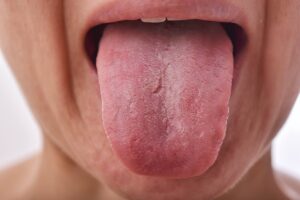 With the tongue occupying such a large area inside the mouth (or ‘oral cavity’), you’d think its anatomy would be common knowledge. Because this muscle functions continually without tiring, it tends to be taken for granted. It’s importance to your overall health, however, is unbounded.
With the tongue occupying such a large area inside the mouth (or ‘oral cavity’), you’d think its anatomy would be common knowledge. Because this muscle functions continually without tiring, it tends to be taken for granted. It’s importance to your overall health, however, is unbounded.
To correct a common misconception about the tongue, it is not the strongest muscle in the body. Although it ranks in the top 5 or so, the muscles surrounding the eyes actually have that supremacy. The heart, deemed the hardest working muscle in the body, and the masseter (jaw muscle) are also among those that are the body’s stand-outs.
The tongue does many things. It provides our sense of taste, is vital in pronunciation, moves food around as we chew, and aids in swallowing while helping to prevent certain things from being swallowed.
Not one muscle but a combination of 8, the tongue is coated with papillae. These are the tiny, bumpy protrusions on its surface. They help in various ways but are mostly credited for our sense of taste.
Different areas of the tongue are more sensitive to certain tastes. For example, the tip of the tongue detects sweet to the greatest extent while the sides detect sour. 
Papillae also sense touch so that we can feel the form and texture of food.
Saliva helps to keep the tongue moist so it can move around the oral cavity freely. Saliva is also helpful to the tongue by moving bacteria from its surface. However, saliva cannot keep the tongue bacteria-free.
Saliva and food residue can get stuck in the grooves between the papillae, especially on the last third of the tongue. This can create areas for bacterial growth. These bacteria thrive on remains of protein-rich food like fish, cheese or milk.
Here is where, as an Asheville periodontist, I have a particular interest in the tongue. As bacteria accumulate, a whitish film covers the tongue, which also causes bad breath. Keeping bacteria in the mouth to manageable levels is greatly supported by saliva flow.
The tongue’s underside covers two salivary glands of the lower jaw (submandibular glands). These ducts are located where the tongue meets the floor of the mouth.
If you’ve read some of my previous articles, you’ll recall that I’m constantly reminding readers of the hazards of having a dry mouth. Smoking, consumption of alcohol and caffeine, and many medications are all obstacles to the salivary glands being able to function efficiently.
A dry mouth provides a breeding ground for bacteria reproduction. When you consider the amount of bacteria embedded in the tongue’s surface, oral bacteria levels in the mouth can run rampant.
Because the tongue’s surface color can indicate too much oral bacteria, it should be looked at during at-home oral hygiene regimens. It is advised that, after brushing teeth, using the toothbrush to brush the tongue. This can dislodge an enormous amount of bacteria.
Although brushing the tongue tends to be done on the front area, it’s helpful to brush towards the back of the tongue where most bacteria exist (hence, the whiter color and smoother surface). Gagging will stop you from going too far so use that as a guide.
Some toothbrushes have a tongue scraper surface on the back side of the bristles. There are also tongue scrapers available for purchase. These are flexible strips that should be used to scrape from back to front 3 or more times after brushing. Rinsing the scraper is advised after each pass.
To provide even more support in helping the oral cavity control bacteria, an oral rinse can be very helpful. After brushing (for a minimum of 2 minutes) and flossing, swish for 30 or more seconds with an alcohol-free mouthwash. While the intensity of the mouthwash may be greater with initial use, most people notice its easier to swish around the mouth within a week or so.
Low bacteria levels in the mouth make for fresh breath and reduced risk of developing cavities and gum disease. Periodontal disease begins with gingivitis, which causes gum tissues to be tender and bleed when brushing.
Periodontitis, an advanced stage of gum disease, causes red, sore, spongy gums. Other symptoms are persistent bad breath, bleeding easily, gums that loosen from the base of teeth, and teeth that loosen.
Periodontitis can also cause health risks far beyond the mouth. Because these infectious bacteria can enter the bloodstream through tears in the gum tissues, it has been shown to trigger or worsen the development of serious health problems. Some of these are stroke, heart disease, arthritis, Alzheimer’s disease, some cancers, and diabetes.
When it comes to the tongue, remember its important role to your oral and overall health. Keep the mouth moist and its surface clean and your reward will be sweet (without the calories!).
If you are experiencing any signs of gum disease, call 828-274-9440 for an appointment. Gum disease does not go away on its own and will progressive worsen without treatment. Remember – it is the number one cause of adult tooth loss in the U.S.
How Straight Teeth Support Oral Health & Dental Implant Success
Posted on Apr 19, 2021 by William J. Claiborne, DDS MS
As a Periodontist, I often work in conjunction with other dental specialists to provide an optimal outcome at the direction of the patient’s general dentist. By combining our specific skills, we are able to create a complete-care integration of services tailored to attend to unique or complex needs.
For example, as a specialist in the treatment of gum disease and placement of dental implants, my skills are beneficial for ideal outcomes as well as in long-term success. This is especially true when I note signs of bite misalignment in a dental implant patient.
The ‘bite’ refers to how the top row of teeth fit to the bottom row. These upper and lower teeth should “rest” together harmoniously. This fit has a great deal to do with a balanced alignment that is far reaching.
For instance, when teeth are not in proper alignment, there is an interference in the
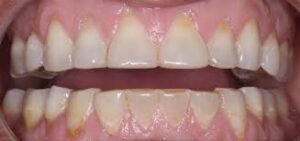
Teeth worn down from grinding, or “bruxing”
interaction of biting, chewing and even speaking. This misalignment can strain the jaw joints as well as the muscles of the face, extending out to neck and shoulder muscles.
Bite misalignment is a common cause of temporomandibular joint (or TMJ) disorder. The TMJ are located on each side of the head and hinge the lower jaw to the skull. Continual stress on these joints can lead to an inflammation that triggers a series of problems.
In most cases, bite misalignment is what triggers night-time clenching and grinding. Known as bruxing, this action can result in chipped, broken and fractured teeth. Other symptoms associated with a misaligned bite – and thus, TMJ problems – include frequent headaches and migraines, ear ringing, dizziness and difficulty opening the mouth fully.
As an Asheville periodontist, I also see how bite misalignment can cause the gums to recede. This occurs as misaligned teeth tilt or turn, which causes an unnatural pulling on the gum tissues surrounding the tooth at its base. As more vulnerable sections of the tooth are exposed, the risks for developing cavities and gum disease increases.
When it comes to dental implants, success rates can be greatly compromised with the presence of clenching and grinding. Here’s why…
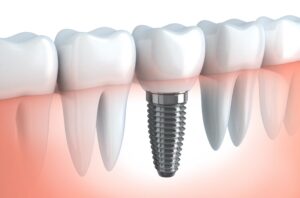 A dental implant is placed in the jaw bone, serving as a replacement tooth root. During the first 3 – 6 months, the bone grows around it, securing it firmly into the bone surrounding it. This process is known as osseo-integration.
A dental implant is placed in the jaw bone, serving as a replacement tooth root. During the first 3 – 6 months, the bone grows around it, securing it firmly into the bone surrounding it. This process is known as osseo-integration.
It is during this time that an implant is most vulnerable to the forces that clenching and grinding exert. When you consider that implants require up to 6 months to become fully integrated into the bone structure, the stress from grinding or clenching can disrupt this process.
According to an analysis published in Dental Implants (Oct. 2015), and using data from ten publications, bruxers experienced a 6.45 failure rate (as compared to 3.65 in non-bruxers.(https://journals.lww.com/implantdent/fulltext/2015/10000/bruxism_and_dental_implants__a_meta_analysis.5.aspx)
My involvement helps to detect what is not always apparent, yet could have a tremendous impact for a successful outcome. Working to help dental implant patients avoid problems in the future is my goal and helps to protect the patient’s investment.
Certainly, misaligned teeth that are crowded or crooked tend to bunch up together. These teeth often form tight angles, creating hard-to-reach areas that make thorough toothbrushing more difficult. As oral bacteria remain, these areas become breeding grounds for an overload of bacteria that run rampant. This can lead to the formation of cavities and the development of gum disease.
The problem of misalignment can result in a vicious cycle: (1) greater risk for gum disease; (2) higher potential for TMJ disorder; (3) increased risk for tooth loss; (4) more likelihood for dental implant failure.
Consider that periodontal (gum) disease is the nation’s leading cause of adult tooth loss. Thus, a condition such as bruxing, which can lead to gum disease, can increase the potential for tooth loss. And, in replacing teeth, bruxing can continue to compromise tooth replacement success (with dental implants or other means, such as crown-&-bridge).
If you’re considering dental implants but suspect you clench or grind your teeth, we’ll discuss ways you can achieve your smile goals and protect your investment.
Call our Asheville periodontal dental office at 828-274-9440 to schedule a consultation.
Know The Qualifications of Who Places Your Dental Implants.
Posted on Apr 05, 2021 by William J. Claiborne, DDS MS
When someone has lost a natural tooth, the word that stands out for me is “lost”. A missing tooth means a lot can be lost.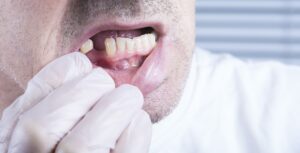
Tooth loss not only leaves a gap in the appearance of a smile, its absence can lead to movement of surrounding teeth.
For example, some people assume that a lost back tooth that is not visible doesn’t need replacing. This is an incorrect assumption. Without all teeth in their proper positions, a gap can cause others to tilt and turn. Additionally, the one above or below will grow longer. These misalignment issues can lead to broken, fractured, or chipped teeth.
Misaligned teeth can also lead to strain on the TMJ, or jaw joints. These joints, located on each side of the head just in front of the ears, are hinges that connect the lower jaw bone to the skull. They are in motion almost constantly.
When the jaw joints experience frequent strain from misaligned teeth, they can cause pain that extends out to head, neck and shoulder muscles. TMJ-related pain can be the source for headaches, migraines, facial pain, ear ringing, dizziness, pain when chewing and difficulty opening the mouth fully.
Obviously, replacing teeth is important. Because of many factors, a dental implant is the superior choice in tooth replacement. A dental implant is a lifetime replacement option. Dental implants restore the ability to bite, chew, speak and laugh confidently without worry. The security of their strength and stability can also be greatly beneficial to one’s self-esteem and self-confidence.
Too, dental implants actually enhance the well-being and lifespan of surrounding teeth. They are an exceptional value when considering their ability to restore the most natural look, feel and function.
In dental implant treatment, the implanted portion is positioned in the jaw bone as a tooth root replacement. This provides attached teeth with the same foundation as natural tooth roots. A partial or bridge simply sits on top of gum tissues and relies on adjacent teeth for support.
Yet, it can be in WHO is involved in your dental implant diagnosis and placement that can provide you with optimal comfort and lifelong success.
When dental offices offer dental implants, many general dentists refer the placement portion to a periodontal specialist. For their patient, this can mean a higher level of comfort and success, especially for complex needs.
However, some dentists offer dental implant placement in their offices. While some have taken extensive courses in implant dentistry, others may have taken a weekend course here and there. These quick courses are typically hosted by an implant manufacturer who trains attendees with a limited selection of implant types. This can limit the patient’s choices when relying on appropriate recommendations for his or her unique needs.
Although there are many factors to go forward with a dental implant, your choice of doctor to place the implanted portion can greatly increase your potential to enjoy your dental implant for a lifetime.
As a periodontist, an aspect of the specialty is the advanced training in the diagnosis and placement of dental implants. This specialized expertise affords patients with a wider variety of choices when it comes to implant systems as well as success in treatment outcome.
For example, consider a patient who is missing a lot of bone mass (often due to missing natural teeth for many years). An implant placed in the upper jaw in too-shallow bone can work its way into the sinus cavity. A lower implant in insufficient bone depth can reach a nerve that runs horizontally through the lower jaw (the mandible).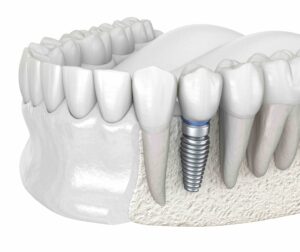
Additionally, the shape, size and the number of teeth to be attached to an implant have much to do with the type of implant system selected. When the placement doctor is only familiar with one or two types, the limitation may pose problems for the patient in the future.
Along with an intricate knowledge of the specific type of implant needed, proper placement angles and depth have much to do with the overall success of the implant. For optimal results, the doctor placing the implant should be skilled in the selection of the implant angles and positioning depths.
In our Asheville periodontal office, we restore the well-being of smiles. We also help patients replace bothersome dentures or partials so they can resume eating the foods they love and laugh confidently in social gatherings.
The doctor is not the sole factor in success, however, Along with proper selection and placement, a patient must take measures to ensure proper oral hygiene at home. Oral bacteria can contribute to an infection that works its way into the bone surrounding the implant. In some cases, the only way to resolve the infection is to remove the implant.
The most troubling thing I see in implant dentistry is when a patient opted for a “good deal” with a less-experienced doctor, and having to remove a ‘failed’ implant.
When a patient entrusts their implant treatment to a skilled doctor and adheres to hygiene and healing guidelines, having an implant fail is very unlikely. The success rate of today’s implant dentistry is excellent – over 97 percent.
Today’s implant dentistry is successful, safe, dependable and can provide nearly immediate benefits. As a dental specialist who has stayed on the cutting edge of implant dentistry’s techniques, technology and materials, I am pleased to witness the transformations our patients undergo after treatment.
The type of dental implant best suited for you can be determined after an examination and review of x-rays (we use Cone-Beam digital imaging). Call 828-274-9440 to begin with a private, no obligation consultation to discuss your best options.
April Is National Oral Cancer Awareness Month
Posted on Mar 25, 2021 by William J. Claiborne, DDS MS
Every person fears hearing the “C” word. A diagnosis of cancer, whether a diagnosis of oneself or of a loved one, invokes a dread of lengthy treatment, years of subsequent health concerns, or even death.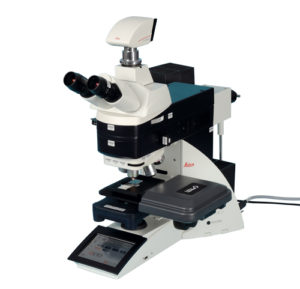
Over the years, breast, colon and skin cancers have received more publicity, which supports the importance of periodic screenings. As a periodontist, PLEASE add another screening to your annual must-do list.
The month of April is designated as national Oral Cancer Awareness month.
Oral Cancer is one of the most deadly of all cancers with one of the worst survival rates. Like pancreatic cancer, oral cancer can remain hidden, which allows it progress long before obvious symptoms emerge.
Once symptoms do appear, oral cancer can be difficult to battle. Treatment is often disfiguring. Sadly, every hour of every day, an American succumbs to oral cancer.
According to the National Cancer Institute Survey, there has been a 15 percent increase in oral cancer rates over the past three decades.
Adult males are at the highest risk for oral cancer, with black males being the most susceptible. The risk also increases with age, especially after age 50. Although the risk typically peaks between the ages of 60 – 70, males between ages 50 – 59 tend to have the highest numbers.
It is important to be aware of the warning signs of oral cancer, including:
• A sore, irritation, lump or thick patch in the mouth, lip, or throat
• White or red patch inside the mouth
• Feeling something is stuck in the throat
• Difficulty chewing or swallowing
• Difficulty moving the jaw or tongue
• Numbness in the tongue or other areas of the mouth
• Unexplained swelling of the jaw
• Pain in an ear without hearing loss
While these symptoms do not always indicate oral cancer, any that do not clear up on their own within 2 weeks should be examined without delay.
As mentioned prior, these symptoms may indicate the presence of oral cancer that is well underway. As with any cancer, periodic screenings are helpful in catching oral cancer in early stages. This is generally part of annual oral health exams conducted by your dentist.
Unfortunately, many people assume “if it doesn’t hurt, then nothing is wrong.” This, I believe, is one of the reasons our nation has such high levels of periodontal (gum) disease and subsequent adult tooth loss. And, as rising oral cancer statistics show, the casual attitude toward dental exams can lead to far worse than losing teeth.
The Centers Of Disease Control & Prevention (CDC) reports that only 62 percent of adults between the ages 18 – 64 have a dental check-up each year. This means that over one-third of adults are going unscreened. If the key component in catching oral cancer early lies in the hands of a dentist, until the patient is in the dental chair, the challenge will continue.
This dental exam is painless. Many patients, if not told, are not aware that the dentist is performing it. During this, the dentist does a visual examination of oral tissues, checking the lips and inside of the mouth (including under the tongue). The dentist will also check the roof and floor of your mouth.
If suspicious areas are noted during the exam, the dentist will order a biopsy. In this, a small sample of tissue from the area of concern is removed and examined under a microscope. This will determine whether further tests are needed.
Added to oral cancer concerns over the past couple of decades are rising numbers in younger age groups is the sexually transmitted human papillomavirus (HPV).
The CDC reports that HPV is now the most common sexually transmitted infection. HPV is so common that nearly all sexually active men and women get it at some point in their lives.
There are different types of HPV, some that cause genital warts and others that cause cancers. It is spread through vaginal, anal or oral sex with someone infected with the virus and can be passed even without signs or symptoms. And, symptoms may not appear until years after having sex with an infected person.
A periodontal specialist has extensive training in the treatment of the soft tissues in the mouth. In addition to treating all stages of gum disease, a periodontist is your first call when any unusual symptom in the mouth arise. This dental specialist is your first step in protecting your smile and adding to a healthy YOU.
If you have not seen a dentist on a regular basis or have noticed any of the symptoms associated with oral cancer, act promptly. Call our Asheville periodontal dental office for an examination appointment: 828-274-9440
Recent Posts
Categories
Archives
- September 2024
- August 2024
- July 2024
- June 2024
- May 2024
- April 2024
- March 2024
- February 2024
- January 2024
- December 2023
- November 2023
- October 2023
- September 2023
- August 2023
- July 2023
- June 2023
- May 2023
- April 2023
- March 2023
- February 2023
- January 2023
- December 2022
- November 2022
- October 2022
- September 2022
- August 2022
- July 2022
- June 2022
- May 2022
- April 2022
- March 2022
- February 2022
- January 2022
- December 2021
- November 2021
- October 2021
- September 2021
- August 2021
- July 2021
- June 2021
- May 2021
- April 2021
- March 2021
- February 2021
- January 2021
- December 2020
- November 2020
- October 2020
- September 2020
- August 2020
- July 2020
- June 2020
- May 2020
- April 2020
- March 2020
- February 2020
- January 2020
- December 2019
- November 2019
- October 2019
- September 2019
- August 2019
- July 2019
- June 2019
- May 2019
- April 2019
- March 2019
- February 2019
- January 2019
- December 2018
- November 2018
- October 2018
- September 2018
- August 2018
- July 2018
- June 2018
- May 2018
- April 2018
- March 2018
- February 2018
- January 2018
- December 2017
- November 2017
- October 2017
- September 2017
- August 2017
- July 2017
- June 2017
- May 2017
- April 2017
- March 2017
- February 2017
- January 2017
- December 2016
- November 2016
- October 2016
- September 2016
- August 2016
- July 2016
- June 2016
- May 2016
- April 2016
- March 2016
- February 2016
- January 2016
- December 2015
- November 2015
- October 2015
- September 2015
- August 2015
- July 2015
- June 2015
- May 2015
- April 2015
- March 2015
- February 2015
- January 2015
- December 2014
- November 2014
- October 2014
- September 2014
- August 2014
- July 2014
- June 2014
- May 2014
- April 2014
- March 2014
- February 2014
- January 2014
- December 2013
- November 2013
- October 2013
- September 2013
- August 2013
- July 2013
- June 2013
- May 2013
- April 2013
- March 2013
- February 2013
- January 2013
- December 2012
- November 2012
- October 2012
- September 2012
- August 2012
- July 2012
- June 2012


